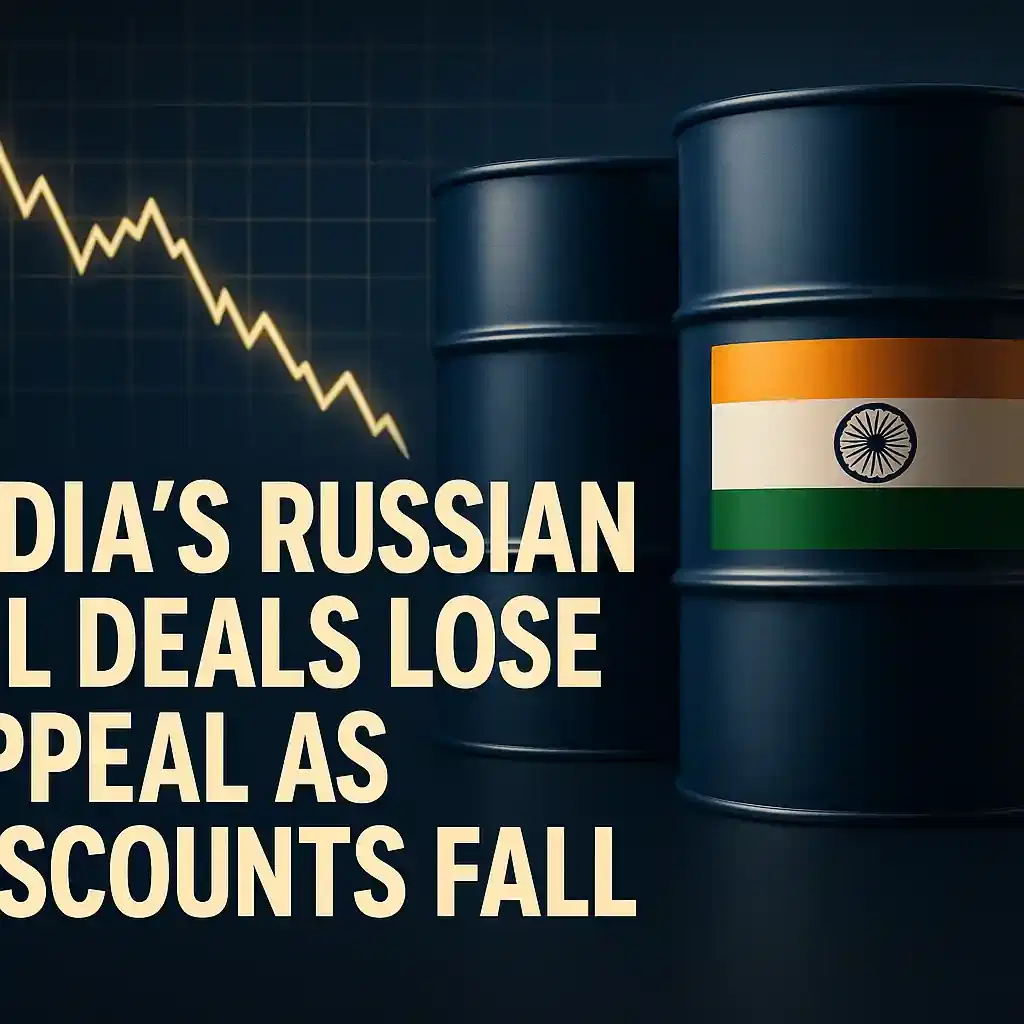Russian Oil Discount Narrows, Reducing Attractiveness for Indian Refiners
Energy
|
29th October 2025, 9:56 AM

▶
Stocks Mentioned :
Short Description :
Detailed Coverage :
The once-lucrative discount on Russian crude oil has significantly narrowed for Indian refiners in recent months. MK Surana, the former Chairman and Managing Director of Hindustan Petroleum Corporation, noted that the discount has fallen from double digits to approximately $2 per barrel, making the economic incentive for large-scale purchases marginal. Surana indicated that this reduction means the decision to continue purchasing Russian oil will "not make that significant difference." India's crude oil sourcing strategy is primarily driven by a techno-economic analysis, which considers various factors beyond just the price. These include the quality of the crude, the gross product value derived from it, transportation expenses, and the specific configuration of the refinery. India already maintains a flexible and diversified sourcing strategy, procuring crude from regions including Africa, the Middle East, Latin America, and the United States, alongside Russia. This adaptability allows refineries to process different types of crude based on prevailing market dynamics. Surana emphasized that any decision to increase or decrease reliance on Russian crude will be based purely on economic logic, such as profitability influenced by crude quality, transportation, insurance costs, and product spreads, rather than political considerations.
Impact: This development suggests a potential shift in India's oil import strategy, moving away from heavily discounted Russian crude if the economic advantage diminishes further. It highlights the importance of diversified energy sourcing for national security and economic stability. Indian refiners might explore other supply options or renegotiate terms, potentially impacting global crude oil trade flows and pricing dynamics for other suppliers. The news is highly relevant for India's energy sector and economic outlook. Rating: 7/10
Difficult Terms Explained: Techno-economic analysis: An evaluation process that considers both technical feasibility and economic viability before making a decision. Gross product value: The total revenue generated from selling all the refined products (like petrol, diesel, kerosene, etc.) obtained from a barrel of crude oil. Refinery configuration: The specific setup and processing units within an oil refinery, which determines the types of crude oil it can efficiently process and the range of products it can produce. Crude quality: Refers to the specific characteristics of crude oil, such as its density, sulfur content, and viscosity, which affect its price and how easily it can be refined into valuable products. Product spreads: The difference between the price of refined products (like gasoline and diesel) and the cost of crude oil. It indicates the refinery's profitability.